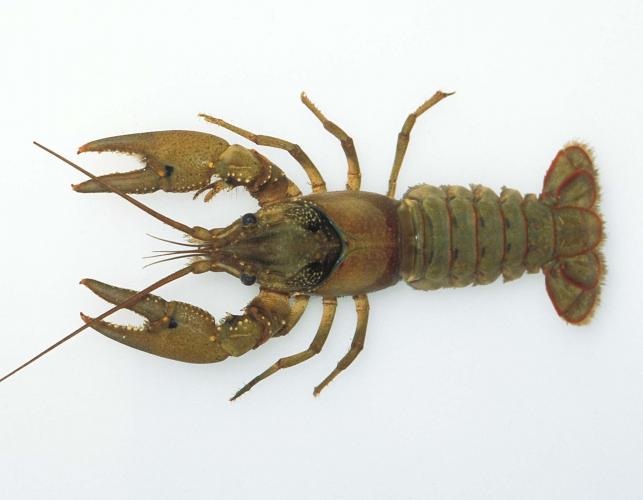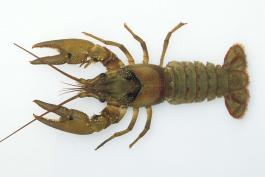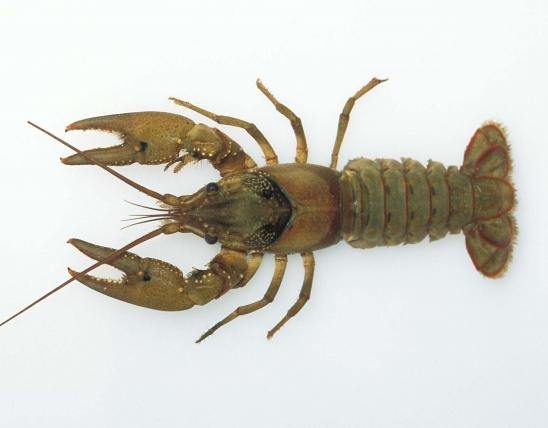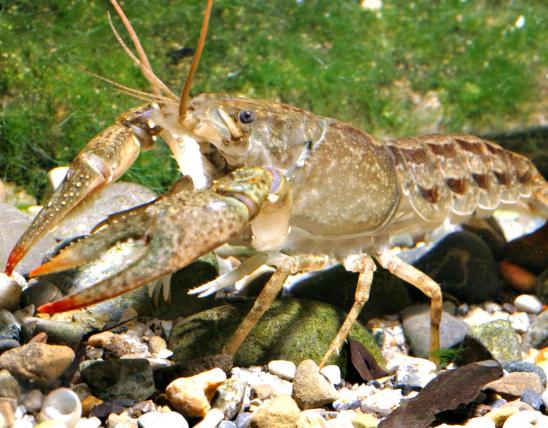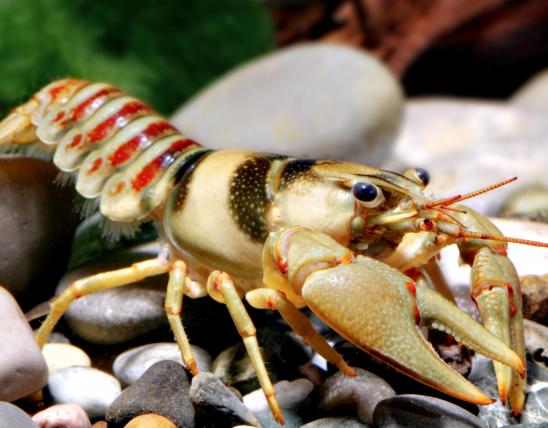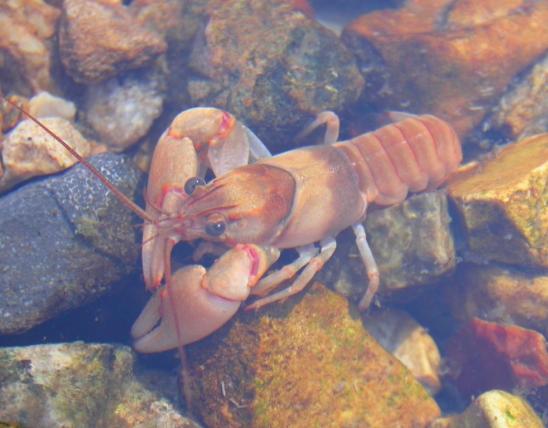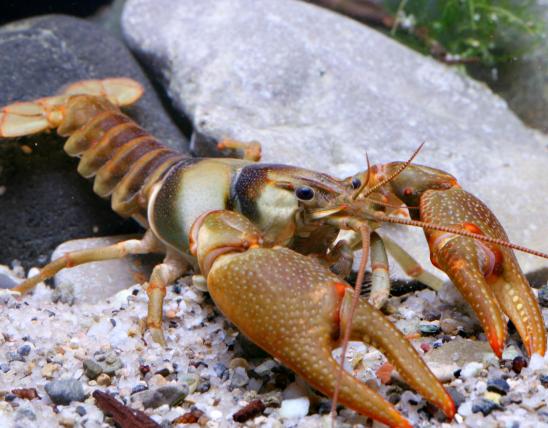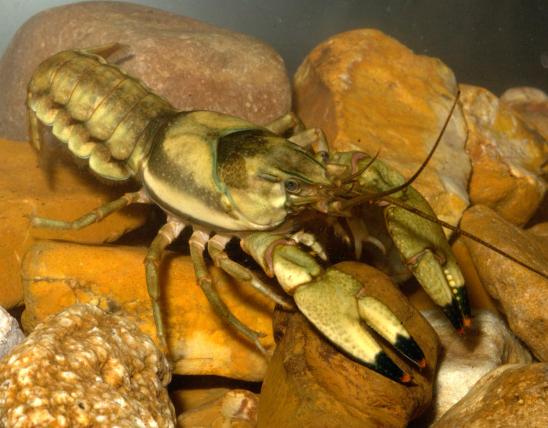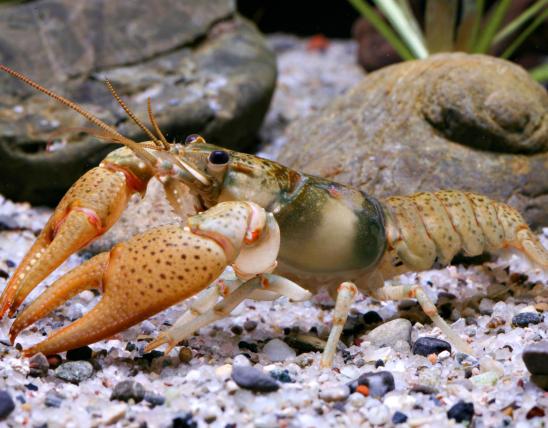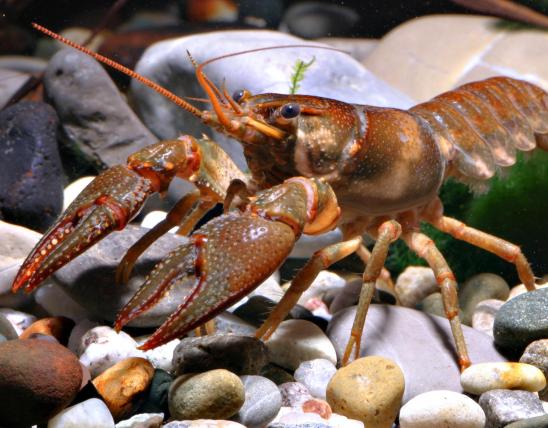
The spothanded crayfish is a rather large crayfish, usually lacking dark specks or mottling on pincers or abdomen, but with yellowish knobs or tubercles on the margins of the pincers. In populations that have it, a noticeable black spot on each pincer near the base of the moveable finger identifies this species. The carapace has an areola (hourglass-shaped area on the midline).
Coloration varies greatly with this species, depending on location:
- In the Current, Gasconade, and White river drainages, the carapace is reddish brown to olive, with a dark saddle mark where it joins the abdomen; pincers are greenish and have the characteristic black spot on the finger. The abdomen is olive, with bright red outlining the segment edges.
- Populations in the Meramec and Black river basins lack the dark saddle mark, and the abdomen and pincers are reddish, not greenish. The “hand spot” is faint or even absent.
- Populations in the St. Francis River basin are gray green, lack bright colors, and lack the “hand spot.” They have paired dark blotches at the hind part of the carapace and the nearby part of the abdomen.
Adult length: about 1¼ to 4½ inches.

Occurs only in the Ozark region of Missouri and Arkansas. It occurs in all principal drainages except the Osage and Neosho (Spring-Elk). In the White River basin, it is confined to the North Fork and Bryant Creek.
Habitat and Conservation
This crayfish occurs in clear, permanent-flowing streams of all sizes, from small headwater creeks to large Ozark rivers and also in spring branches. Frequently found in backwaters and in protected areas along shores. Within its range, this is the most frequently encountered crayfish (that has eyes and pigment) in cave streams.
Food
This alert, active crayfish is a strong swimmer; at night it grazes on algae growing on rocks. This species has also been recorded feeding on a dead sucker (fish) lying on the bottom of a pool.
Status
This species may consist of several subspecies or maybe even species, described as color variants above.
Life Cycle
The life cycle of this species is similar to that of most other stream crayfish in the Ozarks. Breeding occurs in September and October, and females carry eggs and young in the spring. Where they live in colder waters, such as spring branches, the production of eggs and young is often later than where the water is warmer. The normal life span is about 2 years, but some of them probably live for 3 years or more.
Human Connections
In addition to feeding many types of wildlife, crayfish provide food for many species that humans hunt and fish. Crayfish commonly serve as fish bait, and many people eat crayfish, too. Crayfish are fascinating, colorful creatures and are part of our rich native heritage.
Ecosystem Connections
Crayfish are an important link in the food chain between plants and other animals, breaking down plant materials that are resistant to decay. Crayfish in turn are an important food for many other animals. Presence of crayfish in a stream or pond usually indicates good water quality.



